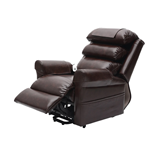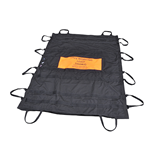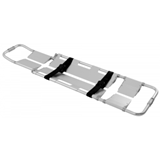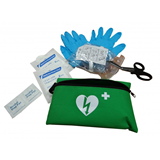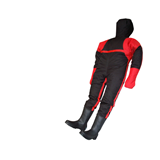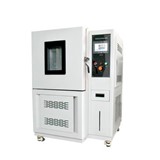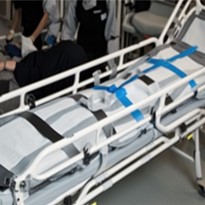Rescue stretchers are vital equipment in various environments, playing a crucial role in safely evacuating injured individuals during emergencies.
This article explores the diverse applications of rescue stretchers, emphasizing their significance in different challenging scenarios.
In the following sections, we will delve into specific environments where rescue stretchers are deployed, starting with search and rescue operations in challenging terrain.
I. Search and Rescue Operations: Navigating Challenging Terrain
A. Challenges in Challenging Terrain
- Search and rescue operations in rugged or remote areas present formidable challenges. These difficulties include:
- Inaccessible locations with rough, uneven terrain.
- Limited access for conventional vehicles or equipment.
- Harsh weather conditions, including extreme temperatures and unpredictable terrain hazards.
- In such scenarios, the need for specialized rescue stretchers becomes evident.
B. Types of Rescue Stretchers for Challenging Terrain
- Various types of rescue stretchers have been developed to address the unique demands of challenging terrain. These stretchers boast specific features tailored for their intended environments, including:
- Durability: Challenging terrains demand rugged construction to withstand rough handling and environmental stressors.
- Maneuverability: The ability to navigate through narrow passages or steep slopes is critical.
- Adaptability: Rescue teams require stretchers that can be configured to accommodate different patient conditions and transport methods.
- These specialized stretchers are designed to enhance the efficiency and safety of search and rescue missions in challenging terrain, ensuring that injured individuals receive prompt and effective medical attention.
II. Emergency Medical Services (EMS): Swift Evacuation from Disaster Sites
A. Role of Rescue Stretchers in EMS
- Rescue stretchers serve as indispensable tools within the Emergency Medical Services (EMS) sector, facilitating the safe and efficient evacuation of injured individuals from disaster sites.
- These stretchers are designed with the primary objective of providing utmost care and stability to patients while being transported to medical facilities, ensuring their well-being is maintained throughout the evacuation process.
- EMS personnel rely on rescue stretchers to stabilize patients, secure them during transit, and navigate the often challenging conditions of disaster scenes.
- The role of rescue stretchers in EMS extends beyond merely transporting patients; they are integral in minimizing further injuries during the evacuation process, especially in situations where conventional transportation methods are impractical or unsafe.
- When disasters strike, whether they are natural calamities, accidents, or acts of terrorism, rescue stretchers become vital assets that enable EMS teams to respond swiftly and effectively, ultimately saving lives.
B. Different Types of EMS Stretchers
- EMS professionals have access to a diverse range of rescue stretcher types, each tailored to specific scenarios and patient needs.
- One common type is the foldable stretcher, which is compact and easily transportable. It provides EMS teams with a portable solution that can be quickly deployed in various environments.
- Scoop stretchers, another prevalent option, offer a secure means of immobilizing patients with suspected spinal injuries. Their split design allows for easy placement under the patient without the need for excessive movement.
- Basket stretchers, often used in rugged terrain and confined spaces, provide enhanced protection and support for patients. Their rigid structure and harness systems prevent additional injury during evacuation.
- Beyond these examples, specialized stretcher variants cater to specific circumstances, such as pediatric patients or individuals with unique medical conditions.
- Each stretcher type possesses its own set of unique features and advantages, ensuring that EMS professionals have the right tools for the job and can adapt to the diverse range of emergencies they encounter.
C. Best Practices in EMS Stretcher Deployment
- Deploying rescue stretchers effectively requires adherence to a set of best practices that prioritize patient safety and well-being.
- EMS personnel must first assess the patient's condition and determine the most suitable stretcher type for the situation. This initial assessment helps in choosing the appropriate immobilization and securing methods.
- Proper patient positioning is crucial to prevent exacerbation of injuries. Ensuring patients are adequately secured and comfortable while being transported is paramount.
- Utilizing restraint systems, such as straps and harnesses, according to manufacturer guidelines is essential to prevent unintended movement during transport.
- Maintaining clear communication within the EMS team is vital for seamless stretcher deployment. Team members must coordinate their actions to minimize the risk of further injury to the patient.
- Regular training and drills are indispensable to ensure EMS personnel are proficient in stretcher deployment, particularly in high-stress, time-sensitive situations.
- Stretcher maintenance and inspections are ongoing responsibilities, guaranteeing that equipment is in optimal condition for immediate use when needed.
- EMS personnel should always prioritize patient comfort and dignity during evacuation, taking into account the physical and emotional aspects of care.
III. Military and Defense Applications: Battlefield Evacuation
A. Battlefield Challenges
- Military and defense operations often unfold in some of the most challenging and perilous environments imaginable. These operations can encompass a wide range of scenarios, from combat zones to disaster-stricken areas, where safety and efficiency are paramount.
- In these high-stress situations, one of the most pressing challenges is the need for rapid and safe evacuation of injured personnel. Battlefield medics and first responders must navigate through hostile terrain, often under fire, to extract wounded soldiers and civilians.
- Moreover, the nature of injuries encountered in military settings varies significantly. From gunshot wounds to blast injuries, the spectrum of injuries necessitates specialized equipment that can adapt to diverse needs.
- The urgency of battlefield evacuation cannot be overstated. The golden hour, a critical window of time during which prompt medical attention significantly increases survival rates, underscores the importance of quick and efficient evacuation solutions.
B. Tactical Rescue Stretcher Designs
- To meet the unique demands of military and defense applications, specialized tactical rescue stretchers have been developed. These stretchers are meticulously designed to address the specific challenges encountered on the battlefield.
- Tactical rescue stretchers are characterized by their rugged construction, engineered to withstand harsh conditions and extreme temperatures. They are often constructed from materials such as lightweight yet durable alloys and reinforced fabrics, ensuring both strength and portability.
- Portability is a key consideration for these stretchers. They are designed to be compact and lightweight, allowing medics and responders to carry them easily in the field. Many models feature foldable or collapsible frames for convenient storage and transport.
- Additionally, these stretchers are equipped with features that enhance maneuverability in combat zones. Integrated handles, adjustable straps, and secure fastening systems enable a quick and secure attachment to various transportation methods, including helicopters, vehicles, and personnel.
- Beyond their physical attributes, tactical rescue stretchers often incorporate advanced medical features. Some models have built-in compartments for medical supplies, intravenous (IV) support, and immobilization devices, enabling medics to provide initial treatment while evacuating casualties.
C. Battlefield Success Stories
- Successful battlefield evacuations using rescue stretchers have been pivotal in saving lives and ensuring mission success. These stories underscore the critical role that specialized equipment plays in military operations.
- In one notable example, during a combat mission in a remote, mountainous region, a group of soldiers encountered an improvised explosive device (IED) blast. Several soldiers sustained injuries, including fractures and internal injuries. Thanks to the quick response of medics equipped with tactical rescue stretchers, all injured personnel were evacuated safely within the golden hour.
- Such success stories resonate across various military and defense operations. Whether in urban warfare environments, dense forests, or desolate deserts, the adaptability and reliability of tactical rescue stretchers have proven invaluable in ensuring the well-being of military personnel.
- The impact of efficient battlefield evacuation extends beyond individual casualties. It influences the morale and effectiveness of the entire unit. Knowing that injured comrades can be swiftly and safely evacuated instills confidence in troops and allows them to focus on their mission, knowing that they will receive prompt medical care if needed.
IV. Vertical Rescue: Aiding in High-Rise Building and Mountain Rescues
A. Vertical Rescue Scenarios
- Vertical rescue scenarios encompass a range of challenging environments where the need for specialized stretchers becomes paramount. These scenarios often include high-rise buildings and mountainous terrain, where traditional stretcher solutions fall short.
- In high-rise building emergencies, such as fires or structural collapses, vertical rescue stretchers play a pivotal role. These situations demand the ability to safely lower or evacuate injured individuals from great heights, where conventional methods may prove impractical or unsafe. The use of specialized stretchers becomes the difference between life and death.
- Similarly, mountain rescues pose their own set of unique challenges. From treacherous slopes to remote, inaccessible locations, these scenarios require rescue teams to navigate through rugged terrain while ensuring the safety and comfort of the injured party. Vertical rescue stretchers are specifically designed to address these challenges, offering stability and maneuverability in steep and uneven environments.
B. Features of Vertical Rescue Stretchers
Vertical rescue stretchers are engineered with a meticulous focus on key features essential for effective operation in high-rise buildings and mountainous regions.
- Portability: These stretchers are designed to be lightweight and easily transportable. Their collapsible or compact designs allow for efficient storage and deployment in confined spaces, ensuring that rescue teams can access injured individuals swiftly.
- Stability: Stability is paramount when navigating treacherous terrain or ascending and descending high-rise buildings. Vertical rescue stretchers are equipped with features such as sturdy frames, secure harnessing systems, and anti-slip surfaces to prevent accidents during transit.
- Adaptability to Vertical Environments: These stretchers are crafted with a clear understanding of the unique demands posed by vertical rescues. They often feature mechanisms for controlled descent or ascent, specialized rigging points, and compatibility with rescue equipment like ropes and harnesses.
C. Expert Recommendations for Vertical Rescues
Vertical rescue operations require a high level of expertise and adherence to best practices. Here are some expert insights and recommendations for using rescue stretchers effectively in vertical rescue scenarios:
- Comprehensive Training: All personnel involved in vertical rescues should undergo comprehensive training programs that cover the proper use of rescue stretchers, rope systems, and safety protocols. Continuous training ensures that rescue teams remain proficient and confident in high-pressure situations.
- Risk Assessment: Before initiating a vertical rescue, teams must conduct a thorough risk assessment. This assessment should consider factors such as weather conditions, terrain, and the condition of the injured party. Assessing risks helps in making informed decisions regarding stretcher deployment.
- Communication: Effective communication among team members is crucial. Teams should establish clear lines of communication to coordinate movements and respond to changing conditions promptly.
- Safety First: Safety should always be the top priority in vertical rescues. Teams should be prepared to adapt to evolving circumstances, prioritize the well-being of the injured individual, and be ready to abort the mission if conditions become too hazardous.
V. Water and Marine Rescues: Floatable and Buoyant Stretcher Variants
A. Challenges in Water and Marine Rescues
- Water and marine rescues present a unique set of challenges, demanding specialized equipment and techniques.
- In these operations, victims are often located in environments where traditional rescue methods may not suffice.
- Buoyancy, stability, and ease of maneuverability become paramount as rescuers navigate waterlogged areas, open seas, or flooding situations.
- Swift currents, turbulent waters, and unpredictable weather conditions can complicate rescue efforts.
- Victims may be suffering from injuries, hypothermia, or exhaustion, making the need for swift and safe evacuation crucial.
- In marine rescues, the presence of debris, submerged obstacles, and the risk of capsizing further intensify the challenges.
- The importance of buoyant rescue stretchers cannot be overstated in such scenarios. These stretchers not only provide a secure platform for victims but also aid in their flotation and protection from the elements.
B. Types of Buoyant Rescue Stretchers
- Buoyant rescue stretchers come in various designs, each tailored to specific water and marine rescue situations.
- These stretchers are engineered to meet the demands of the environment while ensuring the safety and comfort of both victims and rescuers.
- Flat Surface Buoyant Stretchers:
- Feature a flat, rigid surface designed to keep the victim afloat.
- Often equipped with handles and straps to secure the victim during transport.
- Suitable for calm water conditions and swimming pool rescues.
- Inflatable Rescue Stretchers:
- Constructed from durable, buoyant materials.
- Can be inflated to provide buoyancy and stability.
- Highly portable and ideal for watercraft and flood evacuations.
In conclusion, rescue stretchers are versatile and indispensable tools in diverse and challenging environments. Whether used in search and rescue operations in rugged terrain, emergency medical services for disaster evacuations, military and defense applications on the battlefield, vertical rescues in high-rise buildings and mountains, or water and marine rescues, these specialized stretchers play a pivotal role in ensuring the safety and well-being of individuals in distress.










